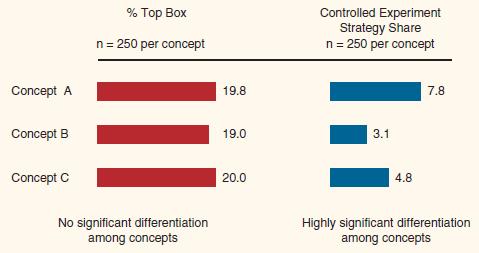Consumers have limited budgets and consumption capacities, so when companies want to make changes to a product
Question:
Consumers have limited budgets and consumption capacities, so when companies want to make changes to a product line, managers want to know how those changes would affect the choices people make within the category. To find out, marketers often use the “top-box” measurement tool of purchase intent. A survey using top-box presents a given product that respondents will rate on a scale typically ranging from “definitely will buy” to “definitely will not buy.”
A clear response would seem to provide the information a manager would need. Even though the response from the survey participant is clear, the answer for the company is not. One potential line extension may rate higher in a top-box scenario, but the top-box comparison offers no indication of whether the higher-rated option will steal share from competitors or pull from other products in the line. Top-box is also known for producing inflated results. Again, this is because it measures desire, not actual choice. It often fails to make distinctions within a broad spectrum of desire, and, as shown in Figure 1, is less able to produce results that clearly demonstrate perceived differences among various product concepts.
Marketers would benefit from using alternative methods, such as conjoint analyses and discrete choice, that measure choice, not simply model it. Researchers should create equivalent test groups from the sample, establishing a control group using a full set of relevant competing products, including those they currently offer, and systematically introduce the test product altering a single different variable for each other test group. This is essentially an application of the scientific method. This approach allows experimenters to manipulate any variable within the test sample or element within the marketing mix. Experimenters can even compare different strategies, such as a product adaptation versus a line extension.
Questions
1. Do you think top-box measurement would be more accurate if only one option were presented rather than multiple options? Why or why not?
2. Do you think any marketing research method can accurately predict action rather than simply assess desire?
Figure 1

Step by Step Answer:






